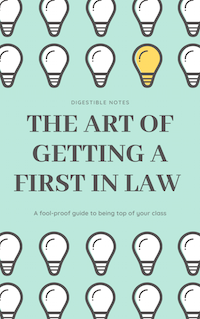Malicious Wounding
Introduction
⇒ Section 20 of the Offences Against the Person Act 1861 states: "Whosoever shall unlawfully and maliciously wound or inflict any grievous bodily harm upon any other person wither with or without any weapon or instrument, shall be liable... to imprisonment for a term not exceeding five years”
⇒ The definition of malicious wounding:
- Actus Reus: the defendant unlawfully either wounded the victim or inflicted grievous bodily harm to the victim.
- Mens Rea: the defendant foresaw that the victim might suffer some harm. Note: it is not necessary to show that the defendant intended or foresaw that the victim would suffer grievous bodily harm.
What does 'unlawfully' mean?
⇒ This means the defendant acted without lawful justification. Self-defence is an example of lawful justification.
What does 'wound' mean?
⇒ This has been interpreted to mean a break in the continuity of the whole of the skin (C v Eisenhower [1984]). A rupture of an internal blood vessel, therefore, is not a wound.
⇒ The requirement that the whole of the continuation of the skin be broken means that a scratch may draw blood but may not be deep enough for a wound if it only disturbs the outer layer of the skin.
The Art of Getting a First in Law - ONLY £4.99
FOOL-PROOF methods of obtaining top grades
SECRETS your professors won't tell you and your peers don't know
INSIDER TIPS and tricks so you can spend less time studying and land the perfect job
We work really hard to provide you with incredible law notes for free...
The proceeds of this eBook helps us to run the site and keep the service FREE!

What does 'grievous bodily harm' (GBH) mean?
⇒ Grievous bodily harm (GBH) means 'really serious bodily harm' (DPP v Smith [1961]).
⇒ GBH can include very serious psychological harm (R v Burstow [1998])
- To amount to GBH there must be more than serious distress or upset: there must be a serious identifiable clinical condition (R v Chan-Fook (1994)) e.g. serious depression.
⇒ It is important to note that the statute requires that the injury either be a wound or the infliction of grievous bodily harm → breaking a collar bone would not be a wound (as was the case in R v Wood (1830)), but may well constitute grievous bodily harm.
What is meant by the infliction of grievous bodily harm?
⇒ It is necessary to show that the defendant inflicted the grievous bodily harm.
⇒ In R v Burstow [1998], Lord Steyn explained that although the words 'cause' and 'inflict' were not synonymous, "in the context of the Act of 1861 there is no radical divulgence between the meaning of the two words".
The mens rea requirement
⇒ The mens rea for section 20 is that the defendant must intend or foresee (Cunningham recklessness) that he or she may cause some kind of harm.
⇒ So it is not necessary for the prosecution to show that the defendant intended or foresaw GBH. It is not even necessary to show that the defendant believed that he or she would cause some harm: it is enough if it is proved that the defendant believed he or she might cause some harm.
Law Application Masterclass - ONLY £9.99
Learn how to effortlessly land vacation schemes, training contracts, and pupillages by making your law applications awesome. This eBook is constructed by lawyers and recruiters from the world's leading law firms and barristers' chambers.
✅ 60+ page eBook
✅ Research Methods, Success Secrets, Tips, Tricks, and more!
✅ Help keep Digestible Notes FREE

